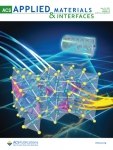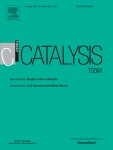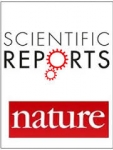
Supervisory institution:
National Science Center
Project manager:
Eng. Emerson Coy, Ph.D, D.Sc.
Budget:
1 411 440,00 PLN
Start date:
2020-07-08
Duration:
4 years
Contract number:
UMO-2019/35/B/ST5/00248
Light-driven photocatalysis is at the core of global energy concerns due to its implications for hydrogen production and the imperative need to reduce fossil fuel dependency18,19. One of the general drawbacks is that direct bandgap semiconductors tend to be highly active in the UV region of the light spectra while ignoring a rather large part of the spectrum. Additionally, some attractive materials like silicon, sulphides, tellurides, and selenides tend to suffer from photo corrosion, hindering their long-term applicability. The problem separately mainly focuses on passivating layers capable of protecting the photoactive structures while not compromising their phot activity. One outstanding and perplexing example of a passivating organic material is the case of Polydopamine (PDA) as a coating for photoactive semiconductor nanocomposites. PDA is a biomimetic polymer that has just recently entered the field of material chemistry, nanotechnology and biomedicine. It is a polymer developed by Lee et al., inspired by research on mussel adhesive properties. One of the proteins inspired by these properties was found to be rich in dopamine and lysine units. Lee's work carried out on dopamine polymerization resulted in preparing a new, biocompatible polymer with solid adhesive properties – called polydopamine. Polydopamine has been used in many fields like preparation Li-ion batteries, photocatalysis, organocatalysis, removal of pollutants from water, synthesis of antibacterial materials, biosensors, molecular imprinting, tissue engineering and bioimaging. Recent studies have shown that nanometrically controlled PDA coatings (<3nm) do not hinder the photocatalytic properties of TiO2 nanoparticles but tune their activation, exhibiting relatively high conversion efficiency of solar energy. This is especially useful for the photodegradation of organic dyes, especially when compared with conventional photocatalysts under visible light irradiation.
Moreover, studies have shown that the photostability of PDA coated nanomaterials is enhanced due to the isolation of the exposed surfaces to environmental damages or stoichiometry losses. However, none of the studies mentioned above examined the mechanism behind the PDA enhancement. Much less the origins of the apparent tunability of the photocatalytic properties of such materials. Additionally, the distinctive colour of PDA is black under room illumination conditions. There is an inherent contradiction between these properties and the observer tunability and photocatalytic response of the PDA coated semiconductor nanostructures, which, to worsen matters, is not accessible by theoretical or simulation means since the fundamental structure of PDA is an open question on its own. Therefore, an experimental study aiming to understand the origin of these effects is needed in the literature. It is here where High Resolution – Transmission Electron Microscopy (HR-TEM) and Energy Loss Electron Spectroscopy (EELS) provide a unique spectroscopic capability for nanometric structures, allowing for a broad range of studies, such as chemical composition, valence distinction, 3D and 4D analysis of nanomaterials and the determination of the dielectric constant of materials in the optical range of frequencies. The further is especially relevant for PDA studies, energy, remediation, and biomedical applications since, as mentioned before, there is a significant discrepancy between the electronic and optical properties of coated semiconducting materials. The current project aims to experimentally investigate the electric and optical changes of biomimetic polymers coated semiconductor nanocomposites (Au, TiO2, Fe3O4 and ZnO), using advanced microscopy and analytical spectroscopic techniques.
Obszar badawczy:




